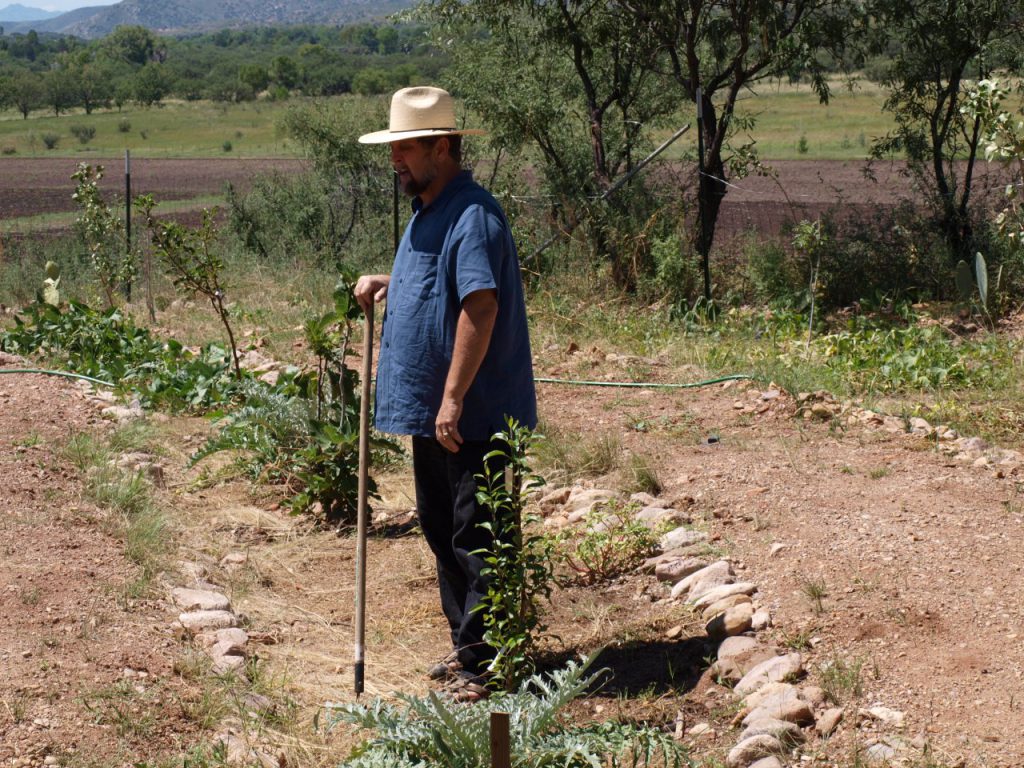
Sustainability Spotlight: Gary Paul Nabhan
Sustainable agriculture needs doers – people out there building soil, repairing habitat, conserving water, sowing and harvesting and sowing again – and it needs thinkers. These big-picture-seers design better tools, research more successful production systems, take stock of where we’ve been and imagine possible futures.
n
Tags:
Sustainable agriculture needs doers – people out there building soil, repairing habitat, conserving water, sowing and harvesting and sowing again – and it needs thinkers. These big-picture-seers design better tools, research more successful production systems, take stock of where we’ve been and imagine possible futures.
For the past 30 years, Gary Paul Nabhan has been one of sustainable agriculture’s most significant thinkers and doers. Researcher, writer, ethnobotanist, poet, ecologist: many adjectives describe Nabhan’s multi-faceted career. He has traveled widely, studying native plants, crops, and food traditions while listening to the stories and needs of the communities from which those traditions emerged. At the center of his work is a reverence for seeds, which he often portrays as an intersection of biology and culture, and a rallying point for sustainability and conservation. To expand and transform our way of eating, sustainable agriculture also needs consumers: shoppers, eaters, readers. As any one of these, we stand to gain much from Nabhan’s work.
An Author with a Cause
Nabhan has written or edited 34 books, including naturalist memoirs, conservation and sustainability research, and accounts of food culture from around North America and the world, often with an emphasis on indigenous lifeways. His 2001 memoir, Coming Home to Eat, was a pioneering text of the local food movement, followed by 2004’s, Renewing America’s Food Traditions, in which he described the U.S.’s major foodsheds – regions based on common geography, natural resources, and food traditions. Nabhan’s writing about agriculture and food is unique in the way it seeks to find common ground between the pleasures of flavor, the authenticity of place and cultural context, and the restrictions put on food production by politics and the natural world.“Conservation You Can Taste”
Nabhan has long been a proponent of biological diversity and his writing and research has helped to build public interest in heirloom vegetables and sustainable farming. Diverse food, he emphasizes, just tastes better. With a diverse food system, we get more choices, we do a better job of supporting other creatures that live on and pass through the farm, and the genetics of our food plants stay more alert and resilient to environmental changes. “In 1985, there were 5,000 varieties of vegetables, herbs, spices, grains and tubers available to the American public through seed catalogs,” Nabhan shared with a group of wheat breeders at a 2014 seminar. “Now there are around 20,000 varieties.”Sustainability from the Ground Up
When Nabhan began farming the five-acre property he shares with his wife, Laurie Monti, unusual weather fluctuations caused extreme drought and then severe cold, both of which damaged their young plants and made Nabhan re-examine their gardening techniques. He subsequently published a book, Growing Food in a Hotter, Drier Land, in which Nabhan explores dry farming techniques he gleaned from desert-dwelling people he’s met during his travels, as well as those he has experimented with himself. Nabhan asserts that farming is not only an essential tool in our resistance to environmental degradation and climate uncertainty, but a way to cultivate hope. “The most reassuring gestures for me,” Nabhan writes, “are the personal acts of planting, water-harvesting, and soil-building. These practices provide a sense of rootedness to a more resilient future. Whenever words fail to offer me much hope, I get down on my knees and put my hands into the earth.”Photos of Gary from garynabhan.com/galleryindex, used with permission
Would you like to be the first to hear about our new products and more? Sign up for our Nature’s Path Newsletter.

